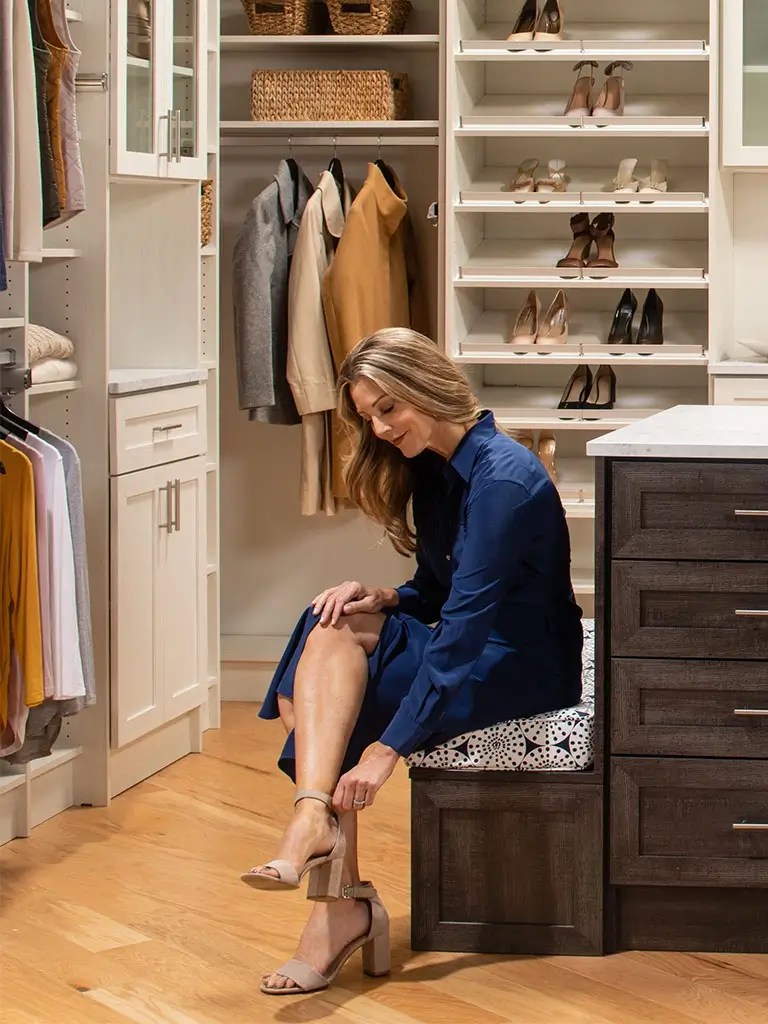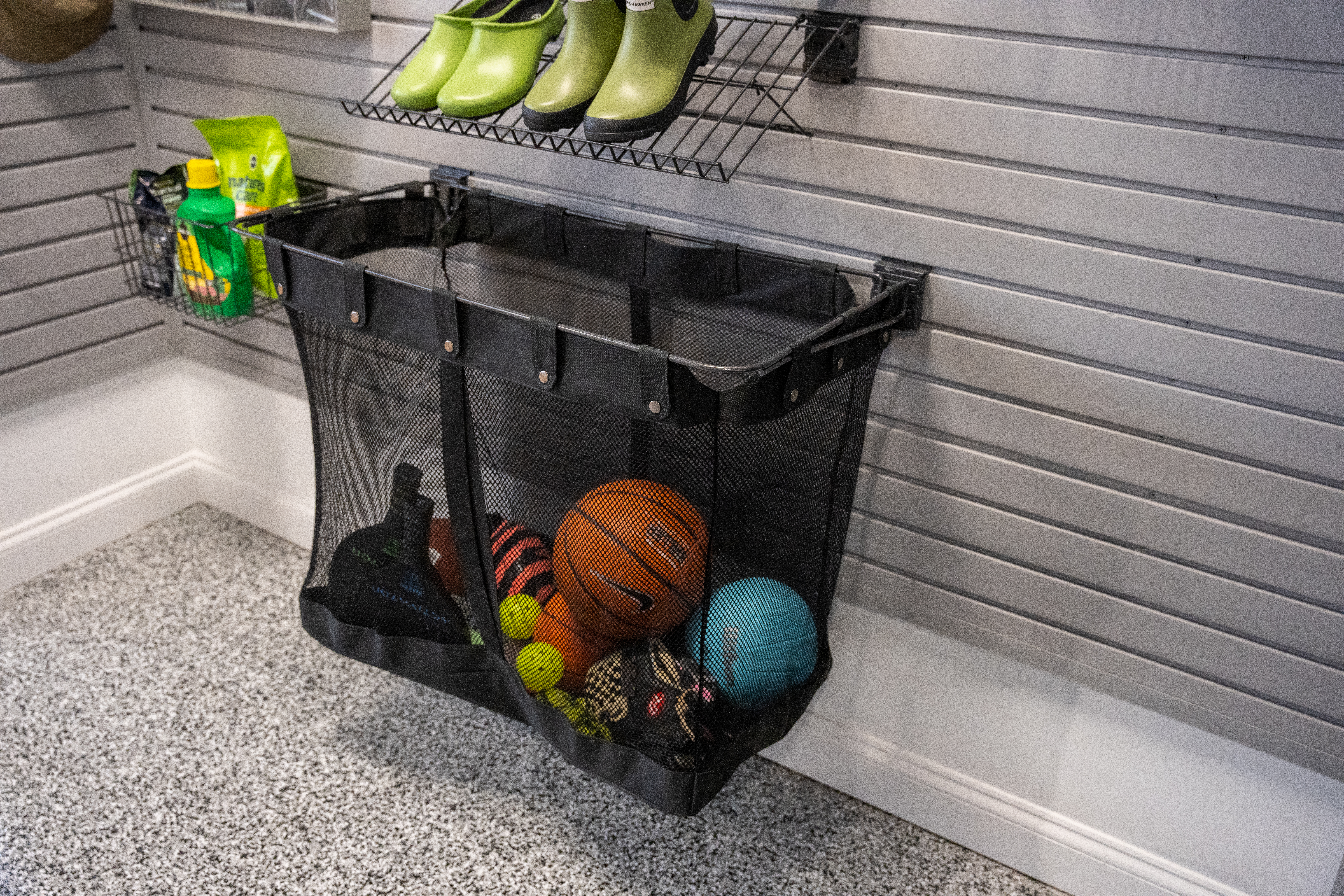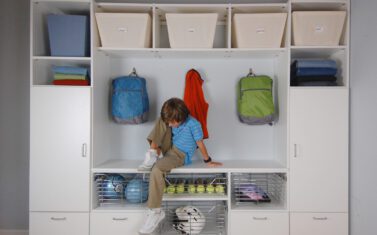
Back-to-School Home Organization Checklist: Practical Tips for Supplies and Schoolwork
5 minute read, by Closet America, on Jul 14, 2025
August always feels leisurely… Right up until class schedules drop, backpacks appear on the shopping list, and hallways collect odds and ends that “we’ll deal with later.”
Smart back to school home organization turns that scramble into a calm transition. Doing the work now lets you reclaim mornings, trim duplicate purchases, and show kids that an orderly environment fuels better grades and less stress. Parents who work remotely benefit too, because an organized home keeps Zoom meetings, spelling quizzes, and dinner prep from competing for the same counter space.
Treat this guide as both a roadmap and motivation. Each section explains why the effort matters, then walks you through concrete steps, with no complicated tools and no weekend-long demolition: just focused adjustments that last well beyond September.
1. Define Dedicated Learning Zones
A consistent study spot reinforces habit and reduces friction. Using one location means fewer lost chargers and less reset time as children switch from play to homework mode. Evaluate the options that best match room size, noise level, and budget.
- Good: Kitchen Table Caddy – Portable bins hold pencils and earbuds so homework can begin the moment dinner plates move aside.
- Better: Bedroom Alcove Desk – A small desk, clamp-on reading lamp, and cork strip create a semi-private nook without consuming square footage.
- Best: Custom Home Office – Built-in shelves, hidden power strips, and an ergonomic chair turn an under-used guest room into a multitasking command center.
Once you’ve settled on a setup, add finishing touches: lay down a rug to absorb noise, install adjustable task lighting, and keep the desktop strictly for school-related items. These touches streamline organizing school work at home and teach even first-graders that every activity has a proper setting.
2. Upgrade Storage in Kids’ Bedrooms
Mismatched hangers, over-stuffed toy boxes, and single-height rods sabotage punctual mornings. Replacing basic hardware with kids’ closets or adaptable custom reach-in closets amplifies usable space and places essentials at eye level. Adjustable shelving doubles hanging capacity, while shallow shoe towers keep floors clear for play.
Extra Strategies
- Seasonal rotation: Stow bulky sweaters on the top shelf until chilly weather arrives.
- Color cues: Assign hanger colors to weekdays so outfits are pre-planned in a single Sunday sweep.
- Evening prep: Encourage kids to hook tomorrow’s uniform on a lower rod before lights-out.
These tactics embody actionable back to school organization tips that free the bedroom for rest instead of rummaging, and they scale easily as children grow.
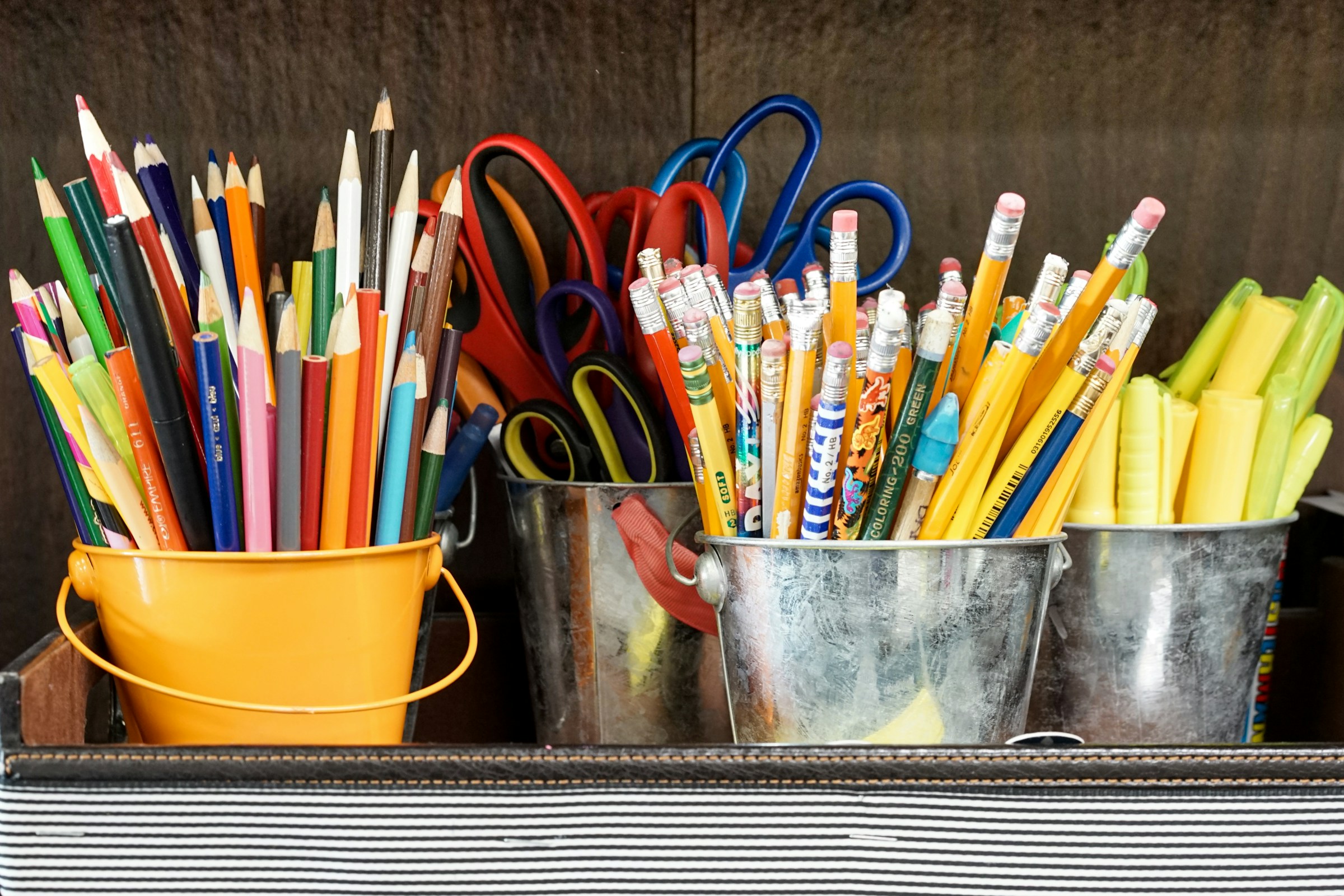
3. Master How to Organize School Supplies
A jumble of unlabeled bins breeds clutter; clear labels turn each drawer into a self-serve station kids can manage on their own. Drawer inserts from our closet organizers line divide deep spaces into tidy grids, ending last-minute supply finding crises five minutes before the bus arrives.
Five-Step Supply Routine
- Audit: Spread everything on a towel and discard dried glue sticks, mystery cords, and marker caps without markers.
- Group: Separate items by task (art, math, tech) so each drawer has a single purpose.
- Contain: Position small trays inside drawers so that nothing slides when children open them quickly.
- Digitize: Add QR-code labels linking to a shopping list, so replacements occur before supplies run out.
- Reset: A five-minute Sunday sweep keeps drawers photo-ready and eliminates frantic late-night store runs.
Follow this routine once and you’ll never wonder how to organize school supplies again.
4. Give Teens a Say in Their Own Systems
High-schoolers balance varsity practices, part-time jobs, and college prep. Their cooperation skyrockets when storage reflects personal style instead of parental guesswork. Start by browsing our tips for teenage girl and boys’ closet ideas.
Teens often worry that shelves feel “corporate,” that sneakers lack display space, or that dirty clothes will still cover the floor. Address these concerns by lining shelf backs with LED strips, converting a standard shelf to angled shoe racks, and sliding a pull-out hamper just inside the door.
By weaving these answers into the design conversation, you transform vague back to school organization goals into a customized zone teens maintain independently.
5. Control Paper Flow From Door to Desk
Permission slips, newsletters, and quiz packets arrive daily. Left unchecked, they bury countertops within a week. A two-stage command center prevents the pileup.
Entry Station Blueprint
- Slot 1 (Urgent): Field-trip forms, tuition payments, or anything due within 24 hours.
- Slot 2 (Review): Flyers and graded tests awaiting signatures.
- Slot 3 (Archive): Finished work destined for binders or cloud storage.
On Sunday evening, file the week’s graded work into binders. Scan standout artwork into a digital folder, then either store the originals in a flat portfolio or recycle what you no longer need. This habit keeps surfaces clear and models efficient organizing school work at home for every age group.
6. Think Vertically in Small Spaces
Row homes and condos lack broad walls, so climb upward. Pegboards beside the closet door corral sports gear, slim bookcases slide between bed and window, and low-profile under-bed drawers keep bulky sweatshirts out of sight until winter, while custom walk-in closets handle everyday outfits.
Hanging shoe pockets on the back of a door can hold calculators, flashcards, and craft glue, maximizing every unused inch. These vertical layers prove that effective back to school organization is less about square footage and more about strategic stacking.
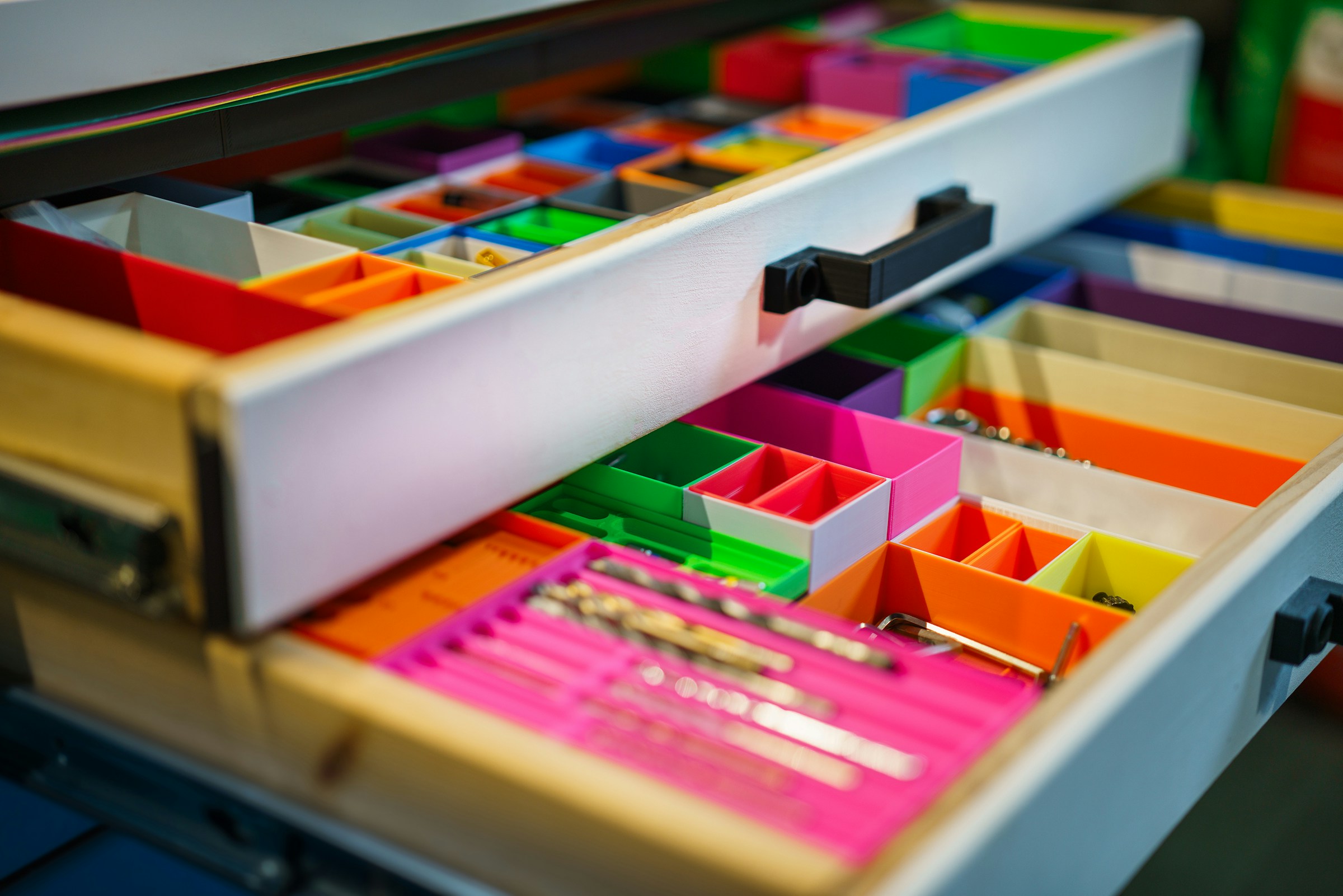
7. Plan Weekly Maintenance Sessions
Staying organized isn’t a one-time project; it’s a skill strengthened through repetition. Use the four-week calendar below to help your family turn tidy-up routines into second nature:
- Week 1: Ten-minute drawer spruce-up each Friday.
- Week 2: Add a backpack purge after Sunday dinner. Remove crumbs, broken pencils, and outdated papers.
- Week 3: Introduce a two-bin paper sort (keep / recycle) so decisions stay simple.
- Week 4: Hand leadership to the kids while you observe and encourage.
After four consistent weeks, tidying up feels automatic, like a part of everyday life rather than a particular chore.
A Clear Path to a Calmer School Year
A disorganized home steals attention from schoolwork, while an orderly space lets learning take center stage.
When children know exactly where homework lives, when teens enjoy closets that express their identity, and when parents can locate every permission slip in two seconds, mornings turn peaceful and evenings run on time. The strategies above demand only modest tools and steady follow-through, yet the dividends last for semesters.
Closet America specializes in tailored storage that adapts as backpacks become laptops and finger-paint masterpieces give way to college applications. Book a complimentary design consultation today and let an organized home power your family’s best academic year yet.
